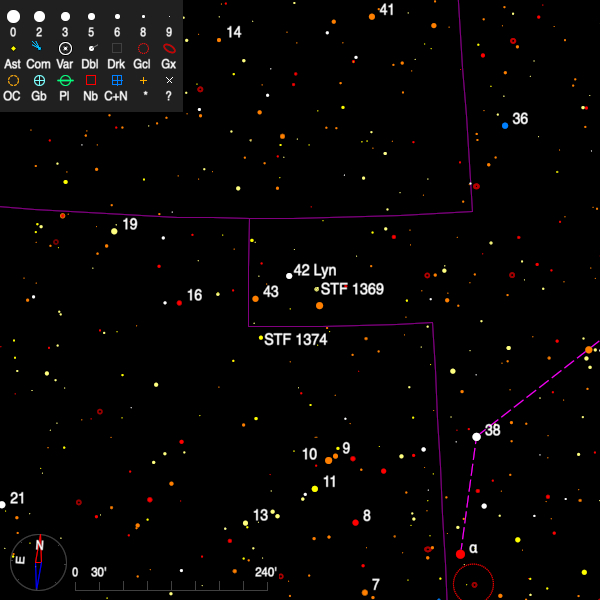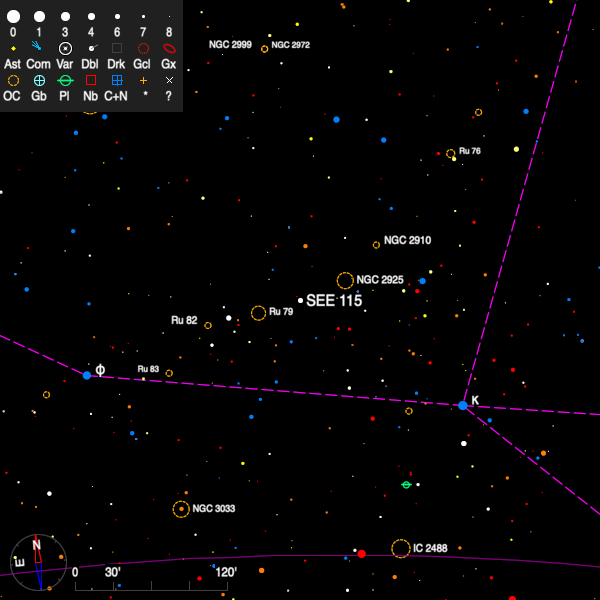March 2023 - Double Star of the Month
At the extreme eastern edge of Ursa Major, where it projects slightly into Leo Minor, there is a triangle of three naked-eye stars - 42 and 43 Lyn and a brighter but unlabelled star of Vmag 4.8 which turns out to be HD 82741. About a degree south of 42 Lyn is STF 1374 (09 41 21.88 +38 57 01.9) which is a long period visual binary.

Since being measured by F. G. W. Struve (275 degrees, 3".3) the pair has closed slightly with increasing angle and is now to be found at 312 degrees, 2".8. This motion is apparently sufficient to allow the calculation of an orbit with a period of 1815 years.
This is a relatively unequal pair with magnitudes of 7.3 and 8.7 given in the Washington Double Star (WDS) catalogue. In the neighbourhood is STF1369 (7.0, 8.0, 150 degrees, 25".1) which is just north of HD 82741. Another star of magnitude 8.4 lies 116" distant and the A component is the close pair COU 2084 with a period of 50 years and a current separation of 0".1.
SEE 115 (09 37 12.65 -53 40 06.6) lies in southern Vela near the border with Carina. It sits neatly at the centroid of the isosceles triangle formed by φ, L and κ Vel.

It was discovered by T. J. J. See, but in the 125 years which has elapsed since then the position angle has only increased by 8 degrees whist the separation remains at 0".7. This is a good test for a 20-cm aperture as the stars are magnitudes 6.1 and 6.3.
Although it has an entry in Gaia DR3, there is no information on either parallax or proper motion even though a relatively wide pair such as this might be expected to have been resolved satisfactorily by this stage of the satellite mission.
Just half a degree WNW is the open cluster NGC 2925 some 10'x10' in size and discovered by Sir John Herschel.
Bob Argyle - Double Star Section Director